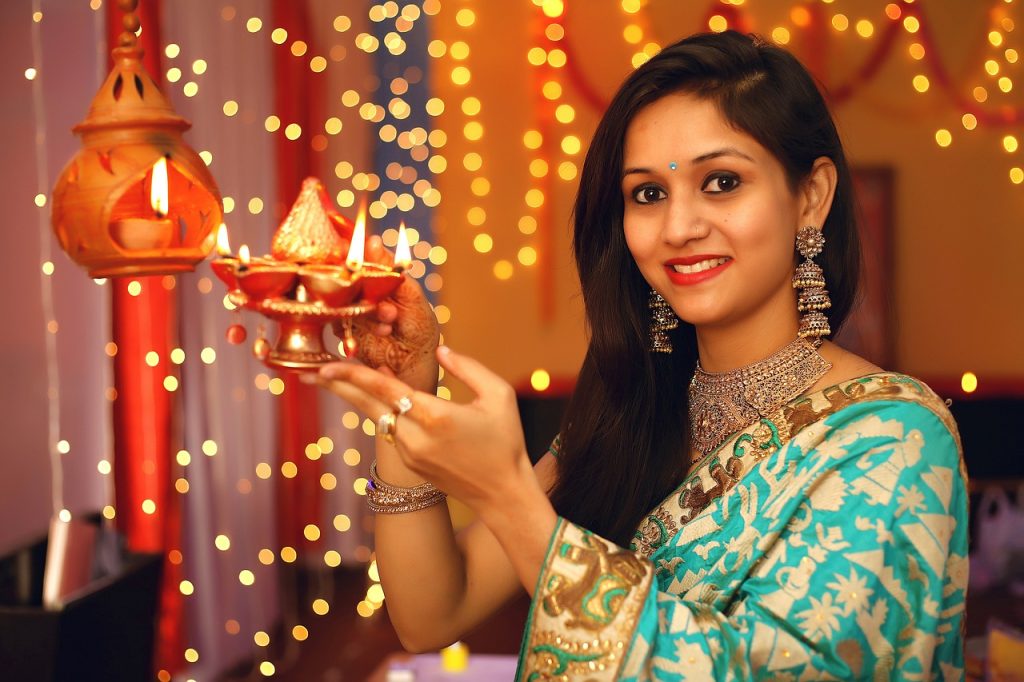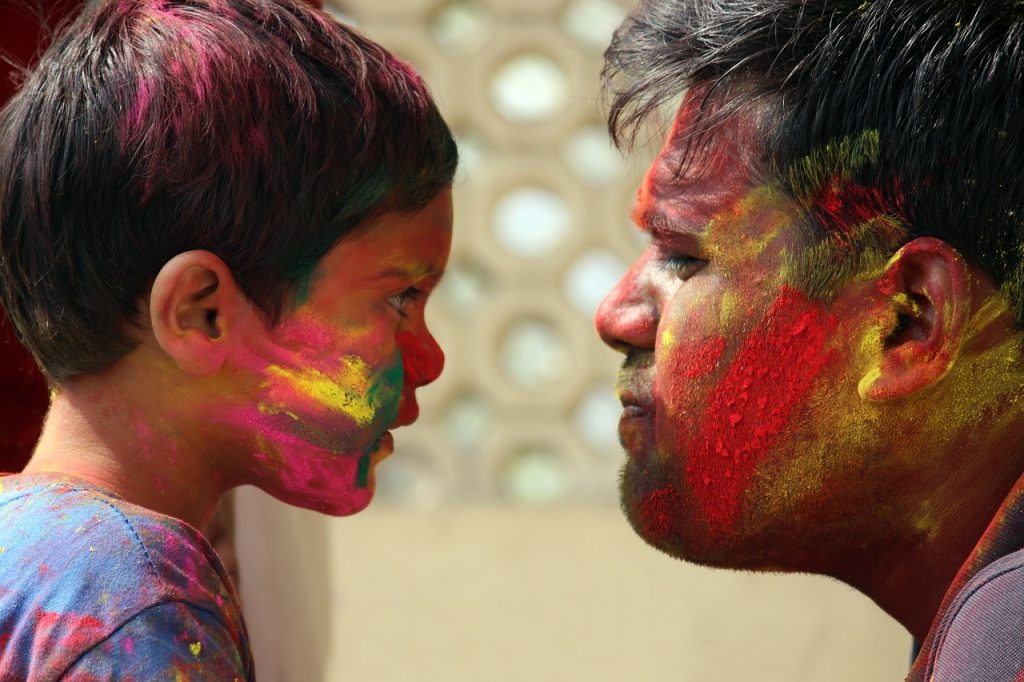Hinduism, or Sanātana Dharma, is the world’s oldest religion. It dates back to more than 4,000 years ago. It has more than one billion followers, ninety five percent of whom live in India. Hinduism is the third-largest religion worldwide, after Christianity and Islam.
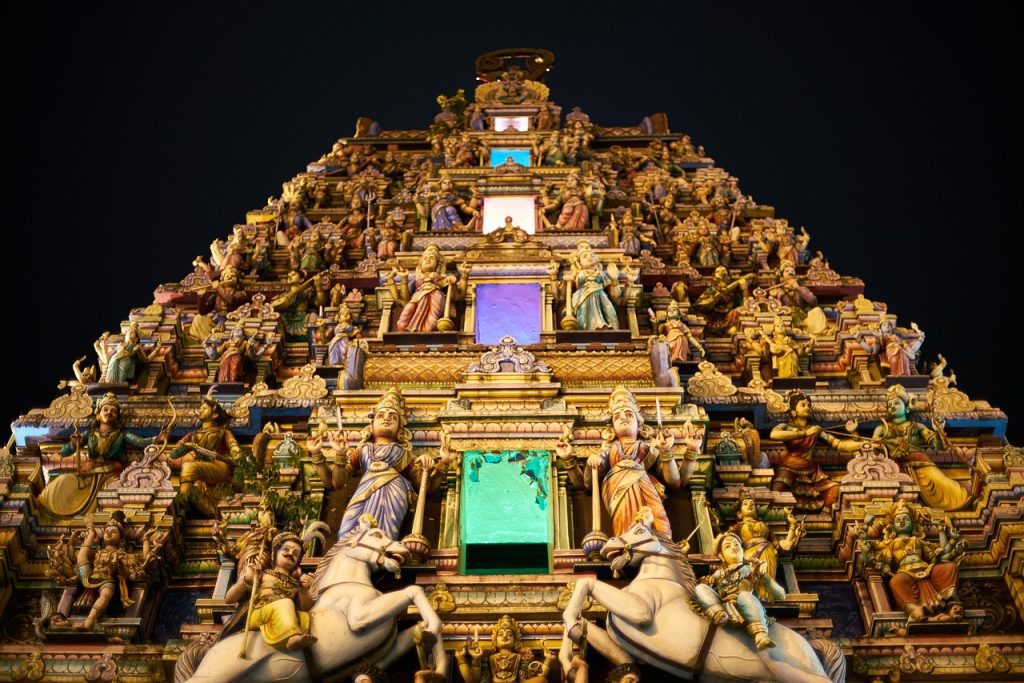
The Origin of Hinduism
Historians believe that Hinduism began between 2300 B.C. and 1500 B.C. in the Indus Valley, near what is now Pakistan. Hinduism is an amalgamation of many different beliefs and it has no founder.
Around 1500 B.C., the Indo-Aryan tribes moved to the Indus Valley, and their language and culture blended with that of the native people living in the area.
Between 1500 B.C. and 500 B.C. the Vedas (the Holy Books) were created. This period is known as the Vedic Period and it is marked by rituals, including sacrifices and chanting.
The subsequent eras: The Epic, Puranic and Classic Periods took place between 500 B.C. and A.D. 500. Hindus began to emphasize the worship of gods and goddesses, especially Vishnu, Shiva and Devi.
The concept of morality (dharma) was introduced in new texts, and other faiths, such as Buddhism and Jainism, spread quickly.
Hinduism Beliefs
Hinduism comprises many religious beliefs. Hindus believe in:
- Samsara: the continuous cycle of life, death, and reincarnation (rebirth in a different life form, for example as an animal)
- Karma (the universal law of action and its consequence). The Hindus believe that people’s actions and thoughts influence the life they are living now and in the future. In other words, if your actions and thoughts are pure and innocent, your life is and will be good.
- Atman: (soul): each creature has a soul, which is part of a supreme soul comprising all the souls in the world. The goal of life is to achieve ‘moksha’ (salvation), end the cycle of reincarnation and become part of the supreme soul.
- Dharma: the code of morality that every Hindu strives to achieve.
- Compassion: The Hindus believe it is important to be compassionate towards all creatures. That is why many of them do not eat meat. Vegetarianism is encouraged in Hinduism.
Symbols of Hinduism
The two main symbols of Hinduism is swastika and om.
The word swastika means ‘good fortune,’ or ‘being happy’ and the symbol means good luck.
Om, or aum, is the most sacred syllable and it means the ‘sound of the universe’, or the sacred soul, Brahman. The Hindus often chant it before a mantra, and after a yoga practice.
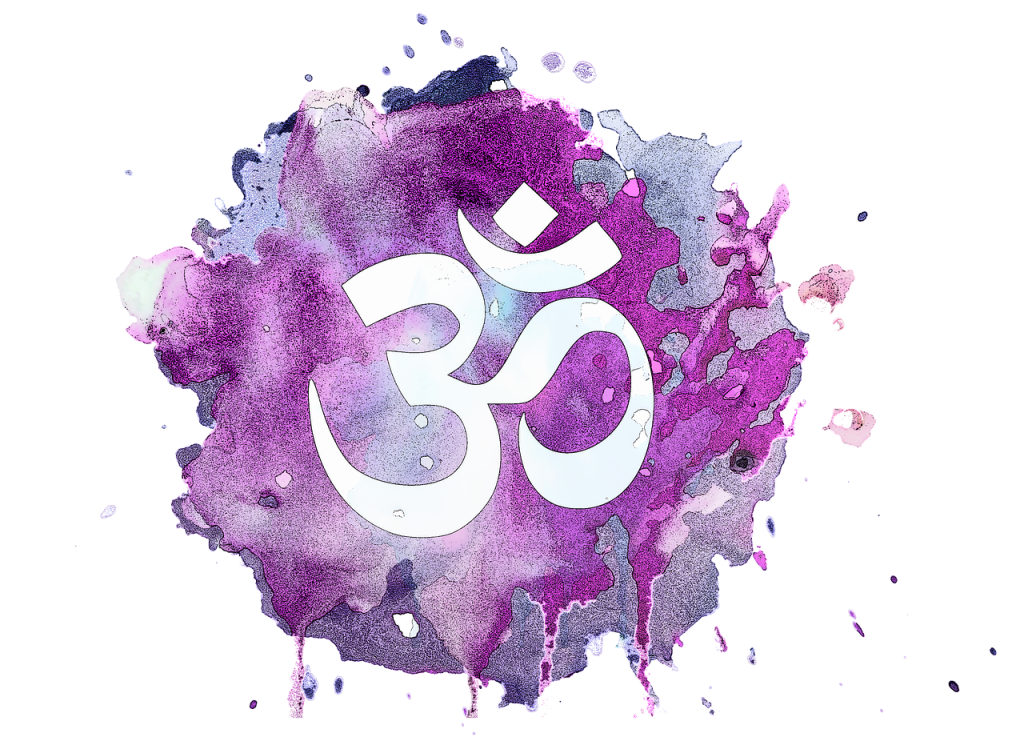
Hinduism Holy Books
Hindus have four main holy books called the Vedas. The Vedas were created around 1500 B.C. The books are a compilation of verses, mantras and hymns written in Sanskrit (Hindu sacred language) and contain teachings by saints and wisemen. There are four Vedas:
- The Rig Veda: is the oldest of the four Vedas. Ved Vyasa wrote it between 1500 B.C. and 1200 B.C. The Rig Veda contains a collection of hymns that praise various Gods, mainly God Indra. The hymns and mantras are to invite courage, happiness, health, peace, prosperity, success, and wisdom into people’s lives.
- The Samaveda: is a collection of melodies or songs and chants. Sama means “melody,” and Veda means “knowledge.” It basically contains the words of Rig Veda in music.
- The Yajurveda: is a collection of verses, ritual worship formulas, mantras, and chants used in worship ceremonies.
- The Atharvaveda: teaches people how to live a long and healthy life, to avoid sorrow and illness, to win over the enemy, etc.
Hindu Gods
Brahman is the supreme God force (Cosmic Spirit) present in all things. Except Brahman, the Hindu people worship other gods and goddesses. The most important of those include:
- Brahma: the creator of the world and all living things
- Vishnu: the preserver and protector of the universe
- Shiva: the destroyer of the universe (He destroys everything in order to recreate it)
- Devi: the Mother goddess (wife of Shiva) who fights to restore dharma
- Krishna: the god of compassion and love
- Lakshmi: (wife of Vishnu) the goddess of wealth and good fortune who values hard work
- Saraswati: the goddess of learning, knowledge, music, art, speech and wisdom
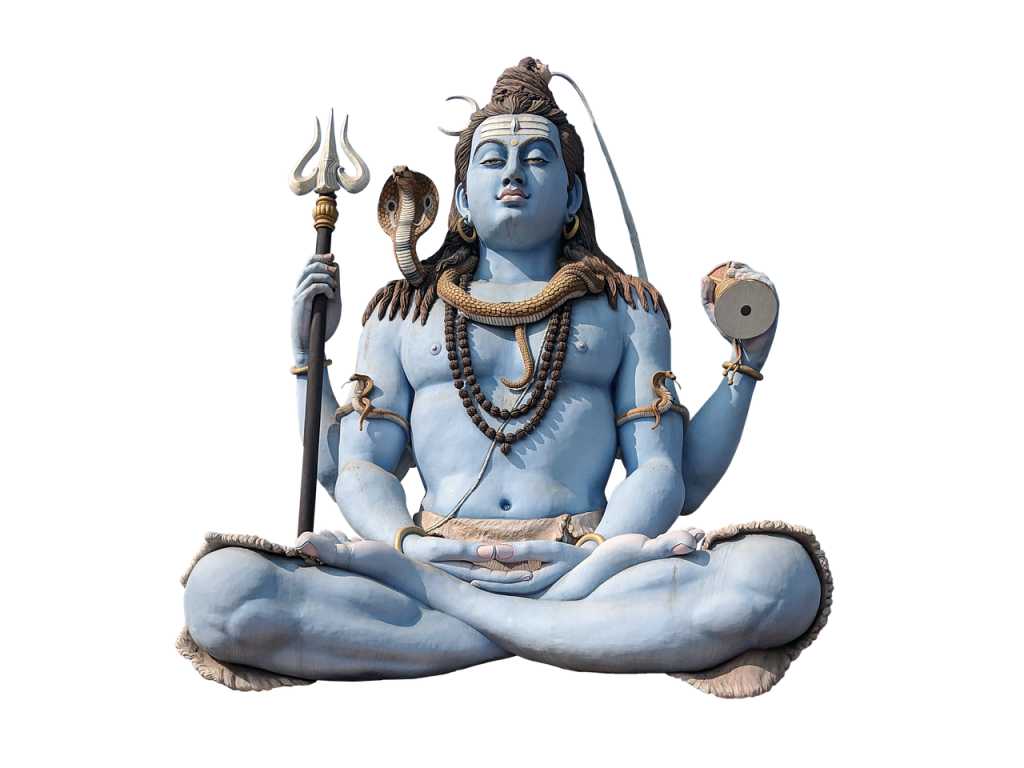
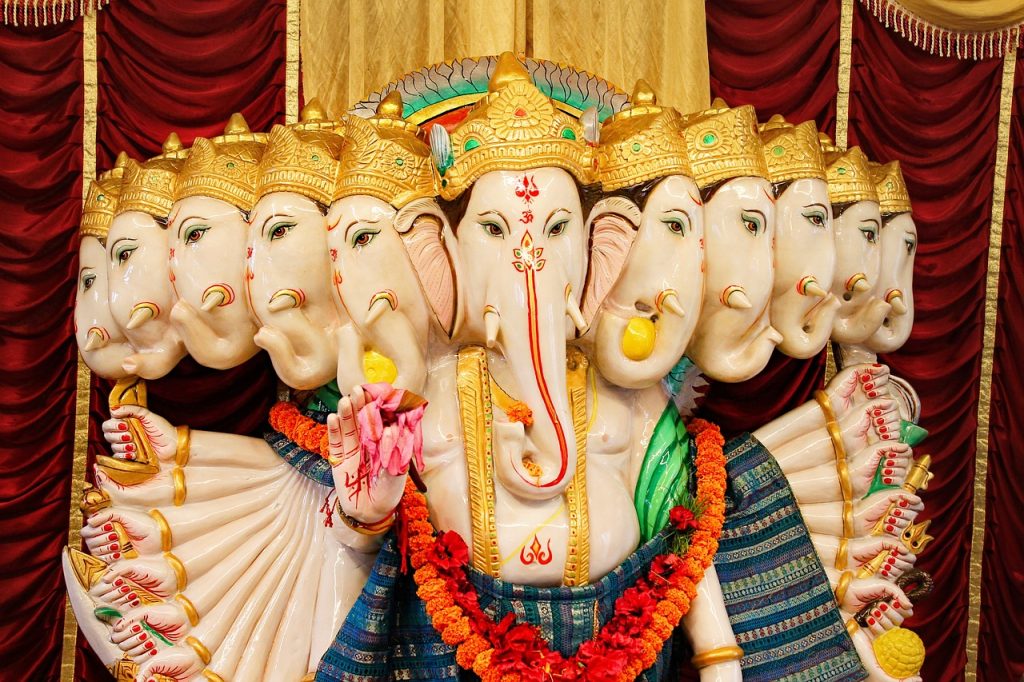
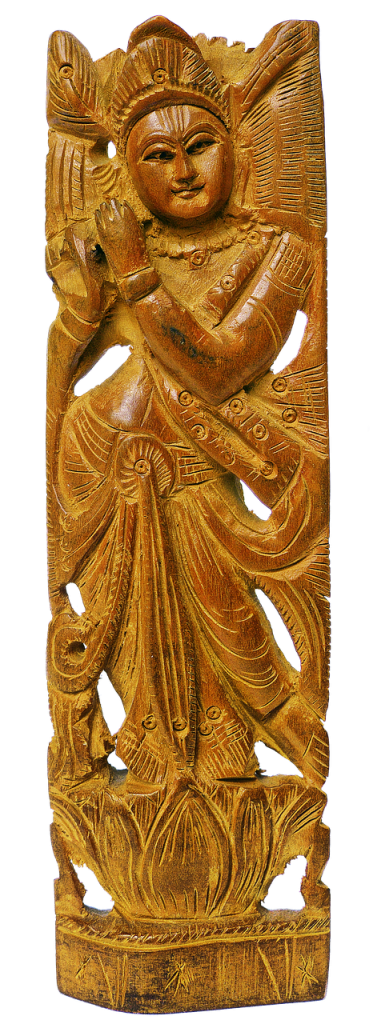
Temples and shrines
The worship, which is known as “puja,” happens in the Mandir (temple). The Hindu people can visit the Mandir whenever they want.
Hindus can also pray at home, and many have a special shrine dedicated to certain gods and goddesses.
Offerings are a common practice in Hindu worship. It is customary to give gifts, such as flowers or foods, to a god or goddess.
Last, but not least, many Hindus take pilgrimages to temples and other sacred sites in India.
The Hindu caste system
The Hindu caste system, or social hierarchy, divides the Hindus according to their karma and dharma.
The four main castes include:
- Brahmin: The highest caste comprising of priests, spiritual leaders and educators as well as agriculturalists, warriors and traders. You can tell them apart from other members of Indian society by their names.
- Kshatriyas: the ruling class and the military,
- Vaisyas: the skillful producers, specifically traders, money lenders, or farmers,
- Shudras: the unskilled labourers: artisans, and high-level servants (those who serve meals and cooks) and craftsmen,
- Dalits: The Untouchables: the lowest and poorest part of the Hindu society. They often face discrimination and violence.
Hindu Festivals and Holidays
Hindus celebrate many holidays and festivals. Some of the most famous include:
- Diwali is a five-day festival of lights. It is celebrated in the month of October or November. Diwali celebrates the victory of good over evil as Lord Rama won over the demon king of Lanka, Ravana. It honours the return of Lord Rama to Ayodhya after 14 years in exile. Hindus celebrate Diwali by lighting clay lamps, sharing sweets, fireworks, and much more. They also worship Lord Ganesh and Goddess Lakshmi.
- Navaratri is a celebration of fertility and harvest that takes place in September or October. Hindus worship Goddess Durga during this nine-day- long festival. They fast and pray for their and their family’s well-being.
- Holi is a spring festival celebrated in February or March that celebrates the victory of good over evil. People forget old grudges and have fun with friends and family members. They sprinkle paint and water on each other.
- Krishna Janmashtami remembers Krishna’s birthday. It comes either in August or September. People fast on this day. Temples are festively decorated, and people pray at midnight, as Krishna was born at that time.
- Raksha Bandhan celebrates the bond between brother and sister.
- Maha Shivaratri celebrates the marriage of Lord Shiva with Goddess Parvati. People fast on this day and chant “Aum Namah Shivaya.” Maha Shivratri is celebrated in February or March.
